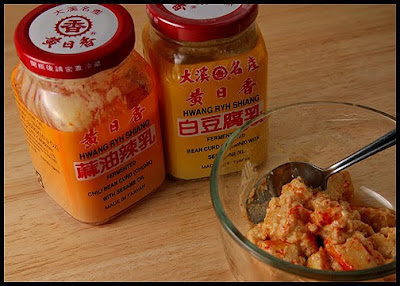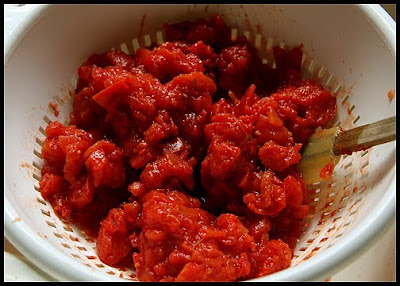Otherwise known as fermented bean curd. Fuyu or doufu ru, as the Chinese call it, has a very pungent aroma and a strong, cheesy flavor. There are several types but the most common are red or white bean curd. The white version is often used as a condiment or used to flavor soups and vegetable dishes. Fermented red bean curd is primarily used to cook with meats.
Originally from China, tofu is an excellent source of protein, iron and calcium. The pickled bean curd are cubes of tofu that have been fermented in rice wine combined with sesame oil, salt, vinegar. The version I used was enhanced with chiles to give it a spicy flavor.
Two pounds of country-style ribs were marinated for about 10-15 minutes in mixture of rice wine-soy sauce-sesame oil-cornstarch. I sauted them in a small amount of oil for a few minutes to brown the outside then I added garlic and ginger.
The pickled bean curd was added and mixed together. After about a minute, I added a little sugar, more soy sauce and rice wine, and added 2 cups of chicken stock. I brought it to a boil and simmered on low for about an hour. The cooking smells were fueling my hunger.
Meanwhile I cooked some rice and roasted some beautiful baby bok choy.
The result was very satisfying. The chile in the bean curd added a little heat while the rice wine-soy sauce-sugar added a slight sweetness. The braise made the riblets very tender and juicy. Use the leftover braising liquid from your wok to pour over the rice.
At first impression, the fermented bean curd was a little different giving off a pungent odor but after fusing it with the pork, garlic-ginger and braising liquids, I would make this over and over. Honestly, I ate the whole load.



























